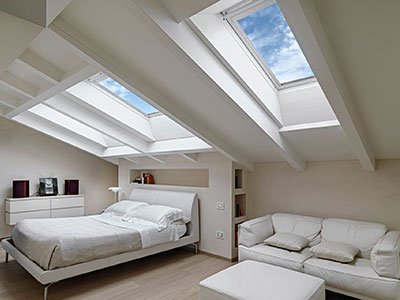Types of Skylight
Table of Contents
How much does it cost to install a skylight?
Skylights are an excellent way of letting natural light into a home. Skylights not only serve to brighten a space but to make it appear larger and homelier. Some skylights also make for a distinct design feature. Looking to brighten up your home? Before you decide to get a skylight installed, it’s best to know the various types of skylights that are available and the differences between them. This will give you a better idea of the kind of skylight you’ll need to bring your plans to fruition.
So, with that goal in mind, this post takes a look at the different skylights available to you, as well as a few things to consider when deciding which one will be best for you.
Why Install a Skylight?
Before we dive into the different types of skylights you could have installed, let’s briefly talk about why you should install a skylight.
Bring in More Natural Light
Skylights are the ideal way to bring more natural light into any room. Natural light offers huge benefits for your health over electrical lighting, including higher energy levels, less eye strain, fewer headaches, and an increased overall level of visual comfort. Sunlight also causes your body to produce more serotonin, your ‘happiness’ or ‘feel-good’ hormone, which is great for your mood and mental health.
Save Money On Air Conditioning and Heating
As well as increasing the amount of natural light, some skylights can be opened for increased ventilation. This allows you to cool down a room without having to fire up your AC unit, saving you significant amounts on your energy bills over time.
They Increase the Value of Your Property
We’ve already looked at the fact that an attic conversion increases the value of your home in our previous post on how to convert your attic into a beautiful new room – but skylights have the potential to drive it up even more. The first reason for this is that, because they allow so much natural light into your home, it completely transforms the aesthetic and atmosphere of the space. Secondly, the increased light gives the appearance of a larger spaces, making the room seem bigger than it is. Lastly, skylights give you gorgeous view of the sky without having to step outside. They just give a room an intangible quality that someone looking to buy your property has the potential to fall in love with.
Different Types Of Skylights
Here’s an overview of the different skylights that you can have installed.
Fixed Skylights
Fixed skylights are a common type of skylight and are categorised by the fact that they’re sealed and can’t be opened. This makes them ideal for scenarios where you want the extra natural light and other aesthetic benefits that a skylight brings, without the need for additional ventilation.
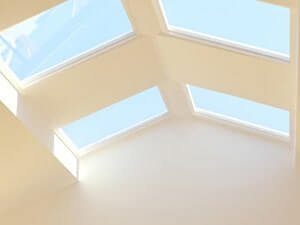
Ventilating Skylights
Another popular variety, ventilating skylights (also called vented skylights) are similar to fixed skylights, with the main difference being that you’re able to open them and ventilate the room. This is especially useful when you want greater control over the temperature. Ventilating skylights are also great in a kitchen or bathroom, as it helps remove excess moisture.

In addition, ventilating skylights can be fitted with an assortment of handy functionality – this includes:
- Remote controls: Some skylights have the added convenience of being able to be opened electronically. This is a whole lot easier than having to climb on a ladder or a step ladder to open it, and becomes more essential, the taller your ceiling (or rather, roof) is. You can also get solar-powered versions of these, so you don’t have to worry about how they’re powered.
- Manual control rod: Alternatively, for those that don’t trust an electric skylight to continue working in the long run, you have the choice of a manual control rod.
- Insect screen: Though skylights offer you the opportunity to enjoy the cool evening air while staring up at the night sky, you also open yourself up to letting in way more insects. Fortunately, this can be prevented with the addition of an insect screen.
- Moisture sensors: Some ventilating skylights have sensors that cause them to close automatically when it starts to rain. This guarantees that the room below stays dry even when you forgot to close the skylight yourself – especially if you happen to be out when it starts raining.
Tilting Skylight
A tilting skylight is a variation of a ventilated skylight. It differs from a normal ventilating skylight by opening from an upper hinge instead of tilting around a central window axis. Some people find this is to be a more convenient way of opening and closing a skylight– though, ultimately, it comes down to personal preference.
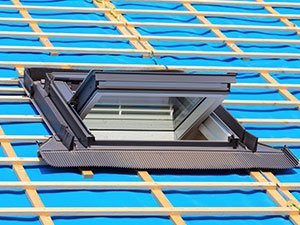
Tubular Skylights
Tubular skylights, also often referred to as sun tunnels or round skylights, are incredibly convenient for those who don’t have enough roof space to install other types of skylights.
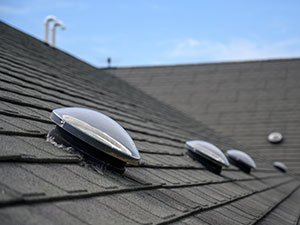
A tubular skylight usually consists of 3 main components:
- A roof-mounted light collector: These are lenses set into a frame which collects light during the day.
- A highly-reflective tube: This transmits the collected light reflected through to the interior fixture with a diffuser lens.
- An interior fixture: This connects the light collector to the diffuser lens that lights up the room below. Often, the interior fixture is fitted with an electrical light, for cloudy days or night-time.
A distinct advantage of tubular skylights is that, due to their size and shape, it’s easier to wrap them around other design features within the room. Conversely, their main disadvantage is that, while they provide light, they don’t offer the view that other types of skylight do.
Curb-Mounted Skylights
A curb-mounted skylight is one that has been built into a frame, or curb, that has been built into your roof. Curb-mounted skylights are a good choice when you have a roof that doesn’t support the installation of other types of skylight. They’ve proven to be a popular variety of skylight because they’re versatile and affordable. You’re also able to install fixed, ventilated, or tubular skylights into the curb.
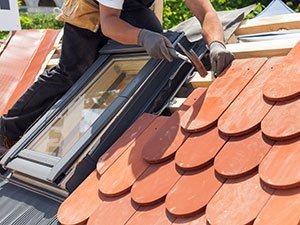
Deck-Mounted Skylights
Deck-mounted skylights are similar to the curb-mounted variety, with the main difference being they’re more a recently-developed model of skylight and sit deeper in your roof. This makes them preferable for people who are concerned about how the skylight will look from the outside – as they don’t stick out from the roof as much as curb-mounted skylights.
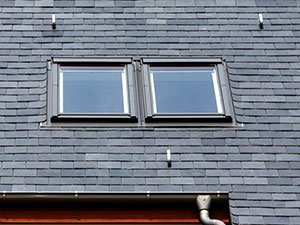
Pyramid Skylight
Pyramid Skylights are usually curb-mounted on flat roofs over a square opening. Though they generally have 4 sides, they can also be installed over 6 or 8-sided, and uneven multi-sided openings – to create polygonal skylights. Similarly, when a pyramid skylight is built over a rectangular opening, it’s referred to as a hip ridge skylight.
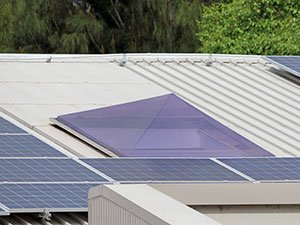
Dome Shaped Skylight
Dome-shaped skylights are notable for their ability to evenly spread light across a space enabling it to illuminate it with only small streams of light. Though they can suit residential buildings, they’re most commonly found in commercial properties and are used to enhance building entrances, lobbies, and atriums. They’re also highly effective at highlighting features like pools and ponds, indoor gardens, sculptures, paintings, and much more.
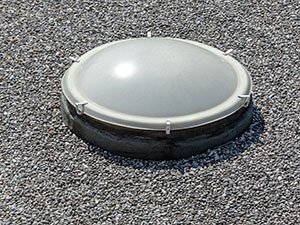
Barrel Vault Skylight
Barrel vault skylights are best suited to commercial buildings and are an excellent way to allow lots of natural light into spacious areas like atriums, lobbies, walkway canopies and other interior office spaces. These skylights can cover more than 80% of a roof’s area is covered by the skylight. For this reason, they don’t offer a great deal of privacy and aren’t ideal for home installation.

Impact Glazing
A worry that some people have about skylights is that the increased exposure to the sun, or more specifically, UV rays, will damage their furniture. Fortunately, this can be prevented by installing a skylight with impact glazing, which features UV-resistant film that prevents your furniture from fading.
Custom Skylights
Lastly, if the shape and condition of your roof doesn’t allow for the installation of the conventional skylights on offer, you could opt to install a custom skylight. This sees a roofing renovation company design and create a skylight to your tailored specifications. This is also an option if you have a clear, vision for how you want your space to look and feel – which can’t be realised with a traditional skylight.
How Do I Choose a Skylight?
So now you have a better idea of the types of skylight available to you, you need to decide which kind would be best for you. Here’s a few things to consider when making your choice.
The Shape and Size of Your Roof
The shape and size of your roof is one of the most important determiners of the type of skylight you can have installed. If your roof is at a shallow angle (ideally, flat) and has a large surface area, then you’ll be able to have a larger variety of skylights installed. The more awkwardly-shaped or small your roof, on the other hand, the fewer options you’ll have.
Light or Aesthetics?
The second most important consideration after the type of skylight you can actually have installed is your main motivation for having one fitted: is it for more natural light or the aesthetic of the room? If it’s purely for flooding a space with more sunlight, you have a greater choice of skylights at your disposal. If it’s mainly for aesthetic value, then your choices are going to be more restricted.
Functionality
What kind of functionality do you want your skylight to have? In reality, this is when you’re choosing between a fixed and ventilating skylight – or, put simply, whether you want your skylight to open or not. Then, if you’re planning on installing a ventilating skylight, you need to decide whether it will be remotely or manually operated. The taller your attic, the better an idea it is to get an electronic ventilating skylight. However, this will come down to your intended budget as well.
Your Budget
And then, of course, we come to cost: the amount you’re willing to spend on your skylight plays a large part in the type of skylight you can have installed.
If cost is a major consideration, then you’re going to have to opt for a simpler type of skylight, such as a fixed or tubular skylight. Alternatively, if you have a larger budget to play with, you can install a skylight with added functionality, such as ventilated skylights with remote control functionality and moisture sensors.
How much does it cost to install a skylight?
The cost of installing a skylight differs, largely depending on its type, its size, and the type of kind of roof it’s being installed into.
Naturally, this cost increases for a ventilating skylight and rises further still for functionality like remote control and moisture sensors.
Alternatively, you might have a custom skylight in mind.
Lastly, be sure to remember that a skylight will save you money on your energy bill and to factor in those long-term savings when deciding how much you’re willing to spend on your skylight.
Conclusion
We hope, now that you’re armed with more information about the types of skylights out there, that you’ll find it easier to make a choice about which one will be best for you.
The main factors that will inform your decision are likely to be the size and type of your roof, whether you want the skylight for increased natural light or to enhance the look of the space, and your budget.
If you want some advice on the kind of skylight you’ll be able to install in your home, as well as help in bringing your vision for the space to life, drop us a line for a hassle-free, no-obligation quote.


